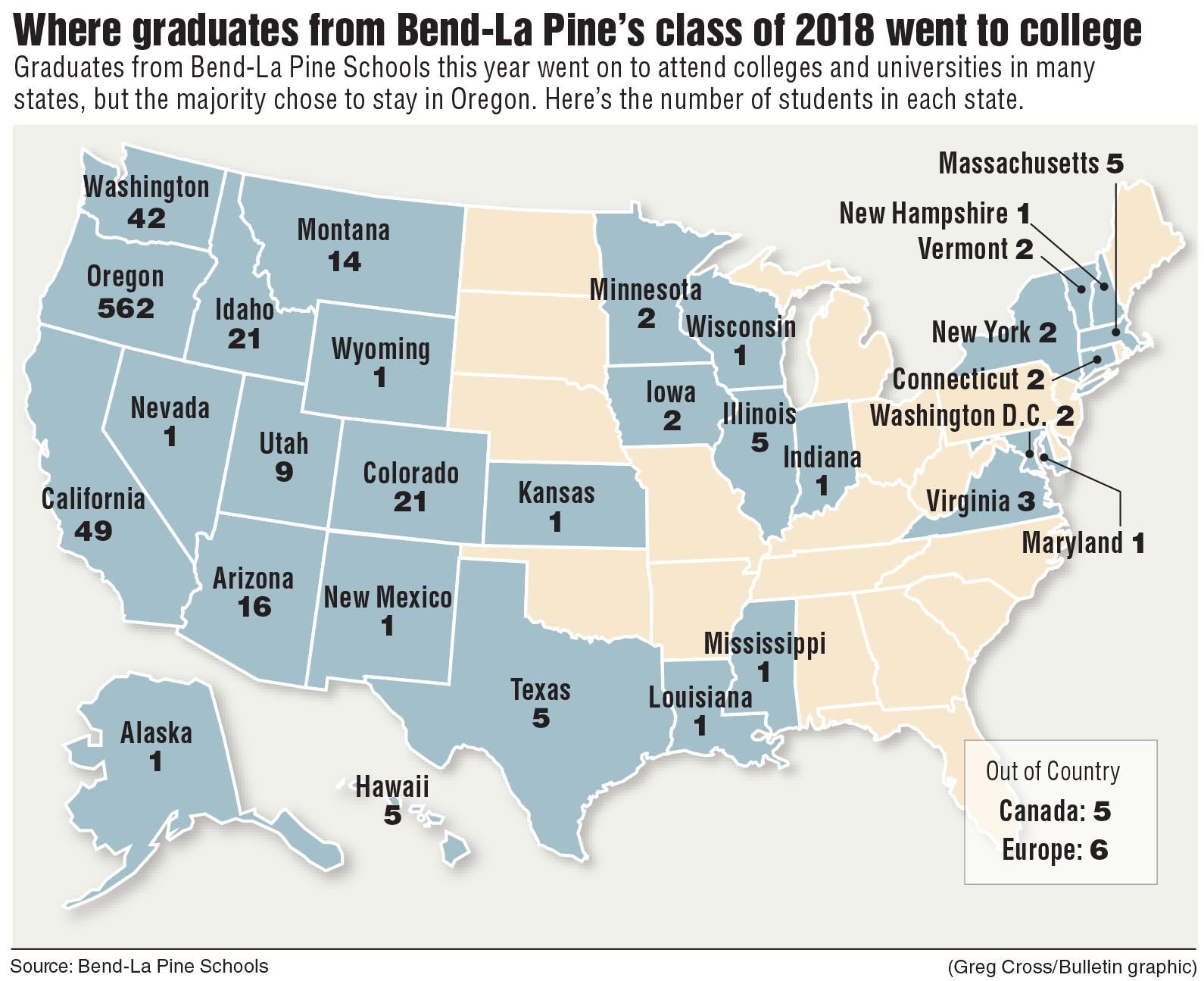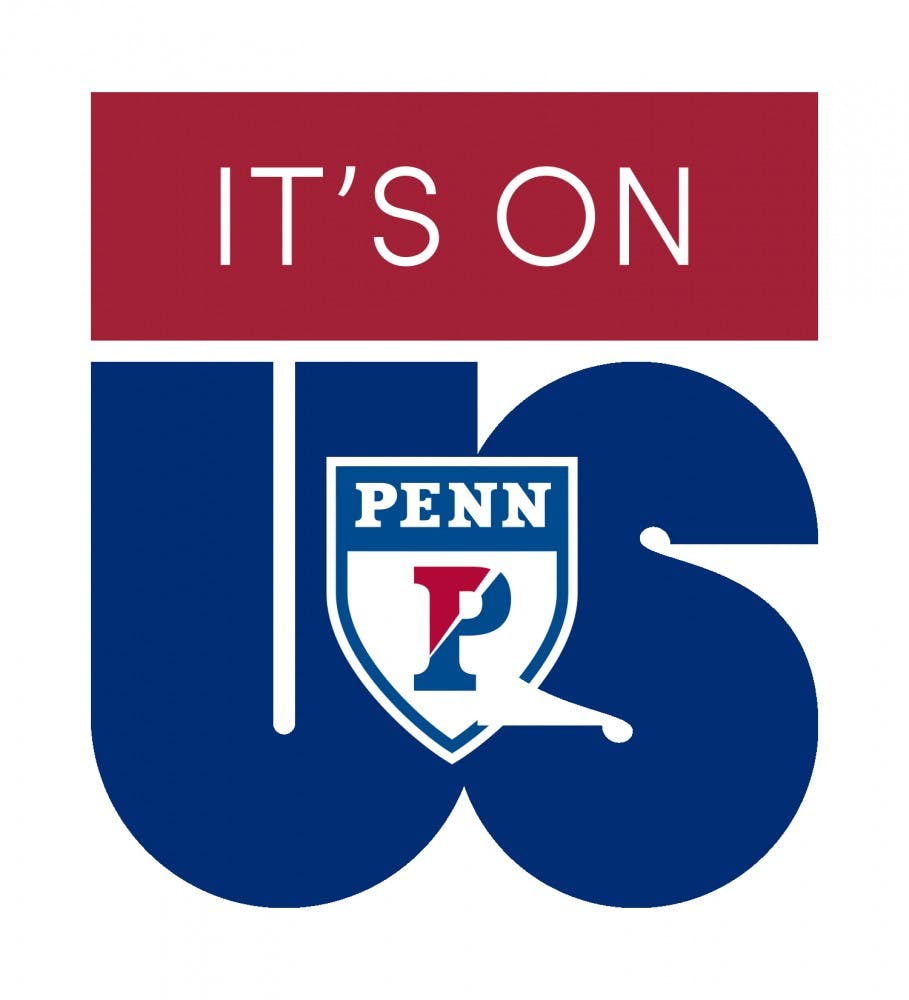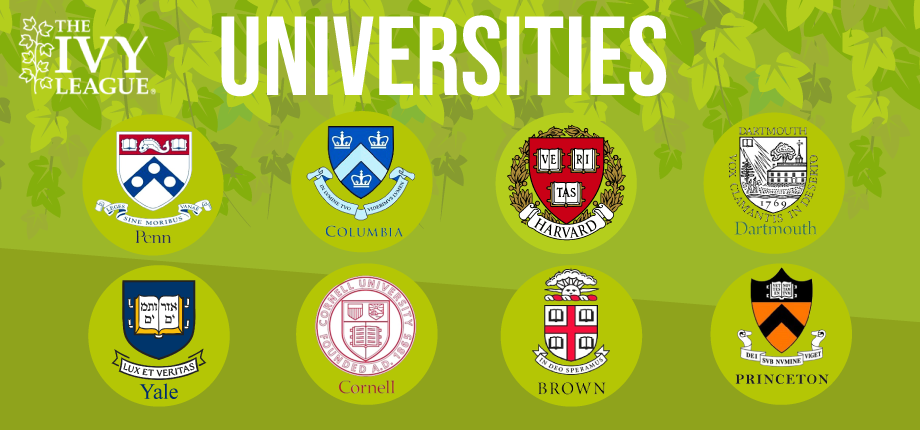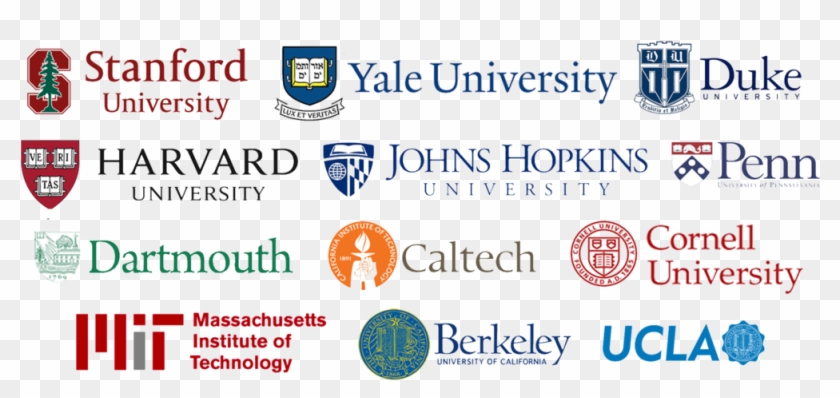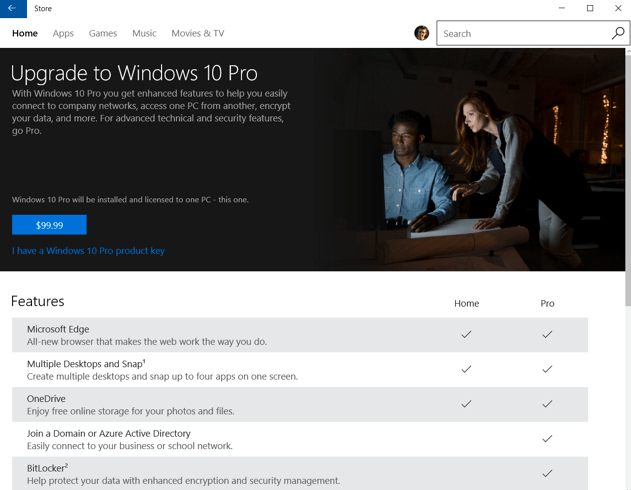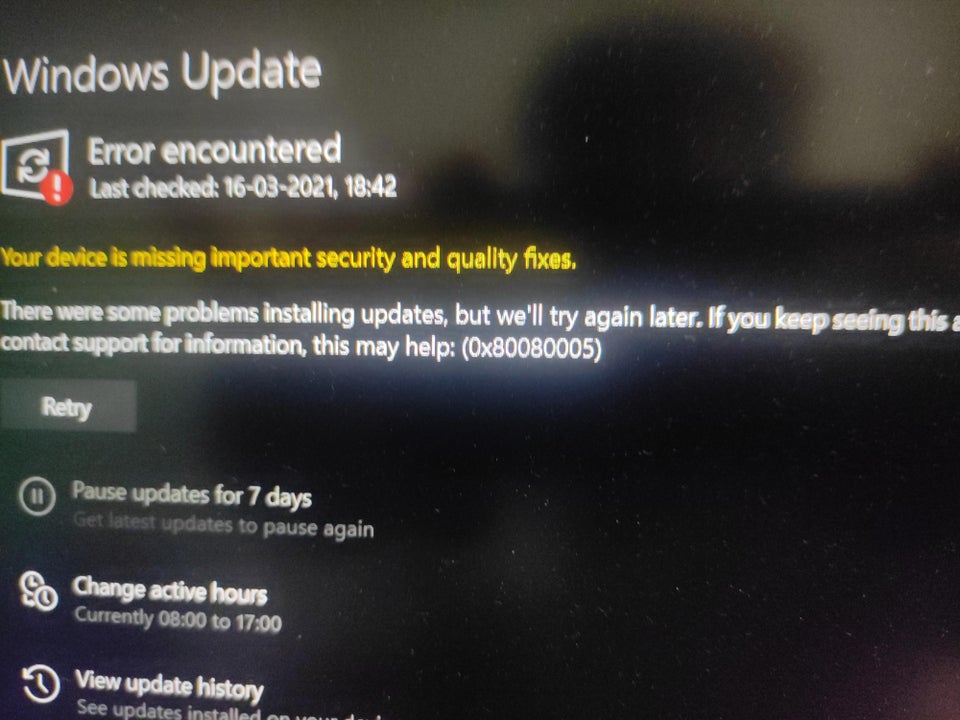The Ivy League is an athletic conference comprising eight private institutions of higher education in the Northeastern United States. The conference name is also commonly used to refer to those eight schools as a group. The eight institutions are Brown University, Columbia University, Cornell University, Dartmouth College, Harvard University, Princeton University, the University of Pennsylvania, and Yale University. The term Ivy League also has connotations of academic excellence, selectivity in admissions, and social elitism. In addition, Ivy League schools are often viewed by the public as some of the most prestigious universities worldwide and are often ranked amongst the best universities in the United States and worldwide. All of the Ivy League's institutions place within the top 15 of the U.S.
News & World Report college and university rankings; with five placing in the top six. These highly prestigious private universities are known for their top-notch academic programs, as well as their hefty tuition rates. Many students dream of attending one of these schools, but the low acceptance rates make it tough to obtain an Ivy League education.
Although Cornell University has the highest acceptance rates of all Ivy League schools, this does not mean that it's an easy school to get into. To be a competitive applicant for any of these eight prestigious institutions, you cannot slack off when it comes to your applications. Start planning your acceptance strategies early, which means studying hard at school and planning ahead for your standardized tests. If you have not been involved in an extracurricular activity since childhood, plan to seriously commit to an activity as early as you can. Choose something you love to do as this will be evident in your application components.
Most importantly, do not choose to go to an Ivy League school for appearances. Choose a program you actually want to attend and graduate from, rather than a program that will look good on your CV. Prestige and social status do not necessarily translate into better educational fit for you. Choose happiness and invest in your education in a school you truly want to attend.
The second most selective and arguably the most prestigious university in the country, Harvard University has been around for longer than the United States has been a country. Since its founding in 1636, the school has grown into a world center for research supported by a $40 billion endowment. The selectivity of Harvard admissions is topped only by Stanford University with its 4% acceptance rate. With a rich history dating to 1764, Brown University is the second smallest of the Ivies, and the school has more of an undergraduate focus than universities such as Harvard and Yale. The university's urban campus sits adjacent to the Rhode Island School of Design , one of the nation's top art schools, and students can easily cross-register between the two institutions.
The Brown admissions process can be a bit daunting with the school's single-digit acceptance rate. It is easy to say "plan ahead", but there is a lot of advantage in knowing what school and program you would like to attend in the future. If you are certain about which school you want to enroll in, it might be wise to apply through the Early Action/Early Decision program. This way, your deadline for application is earlier, but so is your response date.
To utilize this opportunity, you must research your school of choice and determine whether you are a good fit for the program to which you're applying. Early Action programs give you an early answer as to where you stand in the admissions process. According to most recent data, Cornell's acceptance rates for their early decision program is 22.7%!
Located in Upper Manhattan, Columbia can be an excellent choice for students looking for a top-ranked university in an urban environment. Columbia is one of the largest of the Ivies, and it has a close relationship with neighboringBarnard College, one of the nation's top women's colleges. Columbia admissions are among the most selective in the country, and straight "A"s and near perfect SAT scores are not always enough to get an acceptance letter. Many graduate programs are also highly selective, and the university is home to an excellent medical school, law school, business school, engineering school, and numerous other programs.
These colleges are known for being selective in their admissions; since the year 2000, the acceptance rates at each of the universities is said to have varied from 6 to 16 percent. In fact, in the most recent academic year, seven of the eight Ivy League schools reported record-high applications; seven also reported record-low acceptance rates. Each Ivy League college has its own unique accomplishments that make it important. All carry a certain reputation with them, and each school has programs that excel primarily in the medical and law fields, making them some of the most sought-after schools in the world. Their admissions process is very selective, which helps the schools ensure that they only accept the best and brightest. Many famous people have graduated from Ivy League schools, including recent presidents George W. Bush, Bill Clinton, and Barack Obama.
This prestige leads many to believe that these colleges are only for the wealthy and elite. Often, companies look for Ivy League graduates as potential employees, usually preferred by law firms, medical facilities, and large corporations. It has long been coveted to have earned a degree from an Ivy League school.
Today, there are other competitors that some claim to be just as good as their Ivy counterparts. Some of these well-known schools include Duke University, Johns Hopkins, MIT, Vanderbilt, and Georgetown University, to name a few. The Ivy League schools are still excellent in both academia and in sports, and they have left a legacy of higher education with an exceptional track record and reputation to go along with them.
Ivy League schools have a reputation for being elite institutions, with high selectivity during the admissions process. Harvard University is currently the most selective university in the country. Out of 57,435 applications received for the Class of 2025, Harvard admitted only 3.4 percent of applicants.
While the admissions process is extremely selective, it is not impossible for first-generation students to earn a spot in these world-class schools. For example, 16 percent of Yale's Class of 2025 are the first member of their family to attend university. However, the Ivy Leagues have recently come under fire for their admissions processes, which critics say favors legacy students to the detriment of minority students. Ivy League schools happen to be ranked among the best institutions for higher learning in the world for various reasons unique to each university.
Though most think what determines an Ivy League is its prestige, it actually began as the athletic conference the schools belonged to. Each institution has rigorous admissions and an excellent graduation rate, and each one would be an excellent choice. However, we always recommend researching which school and its programs best fit with your individual education plan before applying.
Some of the world's most prestigious institutions for higher learning are on the list of the U.S. list of Ivy League schools. These private institutions are known for their highly selective admissions process, rigorous academic programs, and their habit of graduating future leaders. For it to be worth applying to any of these schools, you should be performing at a very high level academically.
What Are The Near Ivy League Schools Even at the Ivies with acceptance rates above 8 percent , serious applicants have very impressive high school transcripts and test scores. At Cornell, for example, the average SAT score for admitted students is a 1480. The Ivy League is an American collegiate athletic conference comprising eight private research universities in the Northeastern United States.
The term Ivy League is typically used beyond the sports context to refer to the eight schools as a group of elite colleges with connotations of academic excellence, selectivity in admissions, and social elitism. Its members are Brown University, Columbia University, Cornell University, Dartmouth College, Harvard University, the University of Pennsylvania, Princeton University, and Yale University. That is, a rise in the number of discrete students cannot fully explain the decline in acceptance rates at selective colleges in recent years. What used to be a last resort for students who were underqualified for the Ivies is now just as competitive and at the top of many a college wish list. Its location in the heart of Music City is part of the appeal, but so are the academics and campus life. Undergraduate research opportunities are plentiful, and they're integrated into every field of study, and the university is currently pending more than $600 million to convert its dorms into LEED-certified residential colleges.
According to the Princeton Review, Vanderbilt also has the happiest students. The institution was founded in 1746, making it the fourth oldest university in the United States. It is a medium-sized institution with around 5,000 undergraduate enrollments, and like Harvard, has an extremely competitive acceptance rate of only 5%. Some of its most popular degrees include computer engineering, public policy analysis, and economics. It is rated #2 of the best colleges in America to study political science and public policy analysis.
SAT grades range from 1440 to 1570 and ACT grades range between 32 and 35. Before they became coeducational, many of the Ivy schools maintained extensive social ties with nearby Seven Sisters women's colleges, including weekend visits, dances and parties inviting Ivy and Seven Sisters students to mingle. This was the case not only at Barnard College and Radcliffe College, which are adjacent to Columbia and Harvard, but at more distant institutions as well.
The movie Animal House includes a satiric version of the formerly common visits by Dartmouth men to Massachusetts to meet Smith and Mount Holyoke women, a drive of more than two hours. This is because Ivy League schools are known for the prestigious and top-notch academic programs they offer. The challenge is that they all have hefty tuition rates and a low acceptance rate. Even though Ivy League schools have impeccable reputations, they do not produce the most students who ultimately earn doctorate degrees. According to a 2010 CBS Money Watch report, liberal arts schools dominated the top 10 list of students who eventually earned doctorates. For example, liberal arts schools produced twice as many students with science doctorate degrees as compared to other institutions, including Ivy League schools.
If you are planning to pursue a doctorate, you might look beyond Ivy League possibilities and examine additional opportunities. A main difference between Ivy League schools and regular liberal arts schools is their acceptance rates. Ivy League schools are notorious for having highly competitive acceptance rates, and according to a 2012 CNN Money Report, those rates are getting even lower. Harvard and Yale had 5.9 percent and 6.8 percent acceptance rates, respectively, and the Ivy League school with the highest acceptance rate was Cornell at 16.2 percent.
Penn students develop the intellectual connections they need to thrive in an ever-changing and complex world. Working with faculty across a flexible curriculum spanning 4 undergraduate and 12 graduate schools, students develop adaptable, well-rounded minds. The physical proximity of the university's resources make thinking and learning between departments and disciplines a part of everyday life at Penn. From innovative dual degree programs that defy traditional academic boundaries to rigorous grounding in the liberal arts and sciences, Penn is fueled by an open and endless exchange of ideas. In your search for quality education institutions in the US, the name Ivy League is bound to come up.
The elite group of educational institutions has been a constant source of fascination and aspiration amongst students who wish to pursue higher studies in the United States. But what is Ivy league exactly, who all are included in the list of ivy league colleges? Interest in this answer stems from the Ivy League being synonymous with America's most selective, prestigious, and elite colleges. In other words, not only are Ivy League acceptance rates among the country's lowest, each school carries a strong brand name that follows its alumni throughout their educations, careers, and networks.
All eight are in the top 20 for number of sports offered for both men and women among Division I schools. Unlike most Division I athletic conferences, the Ivy League prohibits the granting of athletic scholarships; all scholarships awarded are need-based . In addition, the Ivies have a rigid policy against redshirting, even for medical reasons; an athlete loses a year of eligibility for every year enrolled at an Ivy institution. Additionally, the Ivies prohibit graduate students from participating in intercollegiate athletics, even if they have remaining athletic eligibility. The only exception to the ban on graduate students is that seniors graduating in 2021 are being allowed to play at their current institutions as graduate students in 2021–22. This was a one-time-only response to the Ivies shutting down most intercollegiate athletics in 2020–21 due to COVID-19.
Ivy League teams' non-league games are often against the members of the Patriot League, which have similar academic standards and athletic scholarship policies . The Ivy League schools are highly selective, with all schools reporting acceptance rates at or below approximately 10% or less at all of the universities. For the class of 2025, six of the eight schools reported acceptance rates below 6%. Admitted students come from around the world, although those from the Northeastern United States make up a significant proportion of students.
These highly secretive lists refer to applicants who have been marked by the Admissions Office as being "of interest to the school" for one reason or another. These applicants might be athletes, legacies, children of major donors, or otherwise have a connection to the university and its faculty or administration. The admission rate for students who can get a spot on these coveted lists is significantly higher than that for either early or regular decision applicants. Not only are American high schoolers applying to more schools, they're applying all over the country. And it's not just them; students from all over the world can apply to American universities through the convenience of the internet, which again drives up the number of applications.
International student applications have grown substantially over the past twenty years, meaning that just looking at American demographics is a poor way to understand the college admissions landscape. Cornell's hillside location in Ithaca, New York, gives it stunning views of Cayuga Lake. The university has one of the top engineering schools and top hotel management programs in the country. It also has the largest undergraduate population of all the Ivy League schools. Cornell University admissions may appear slightly less selective than the other Ivies, but don't be fooled. You're still going to need an exceptional academic record, high standardized test scores, and impressive extracurricular activities to be admitted.
If you're planning to apply to any of the Ivy League schools, be realistic about your chances of being admitted. Using a free tool at Cappex, you can calculate your chances of being admitted. News has ranked Babson the number one undergraduate school for entrepreneurship. All first-year students take "Foundations of Management and Entrepreneurship," in which they are given startup money to create, launch, and manage their own companies. In business administration is the only degree granted, but students can choose from 27 concentrations on which to focus their study.
Plus, traditional liberal arts courses are incorporated into the curriculum, for a well-rounded education. Liberal arts colleges, both private and public, are located all over the United States. If you prefer to live in a certain part of the country or want to stay close to home, the location of Ivy League schools might be a consideration. Because all Ivy League schools are private universities, tuition costs are higher for students compared to their in-state public tuition alternatives. However, Ivy League schools also have the reputation for being generous with financial aid due to their large endowments.
This is an often-asked question and before we answer it, it's important to take a close look at the term Ivy League institutions. The Ivy League refers to a collegiate athletic conference that sees participation from the sports teams of eight private universities in the Northeastern United States. The conference name is also commonly used to address those eight schools as a group outside the sports context. These eight schools are Brown University, Columbia University, Cornell University, Dartmouth College, Harvard University, the University of Pennsylvania, Princeton University, and Yale University.
